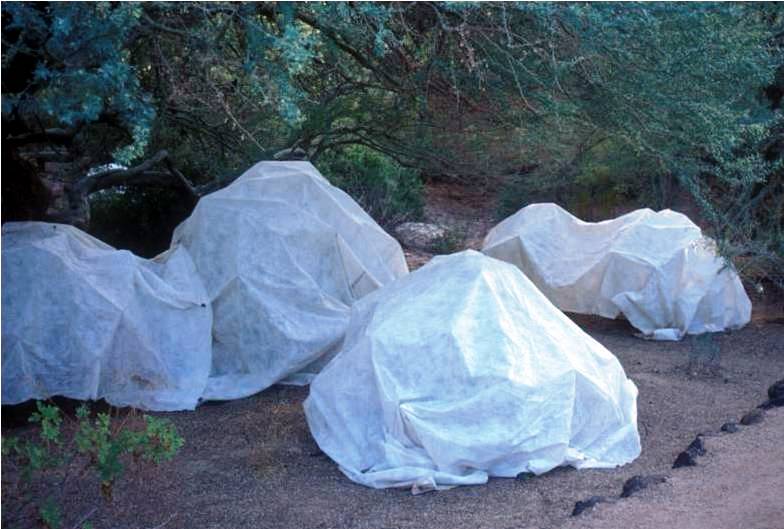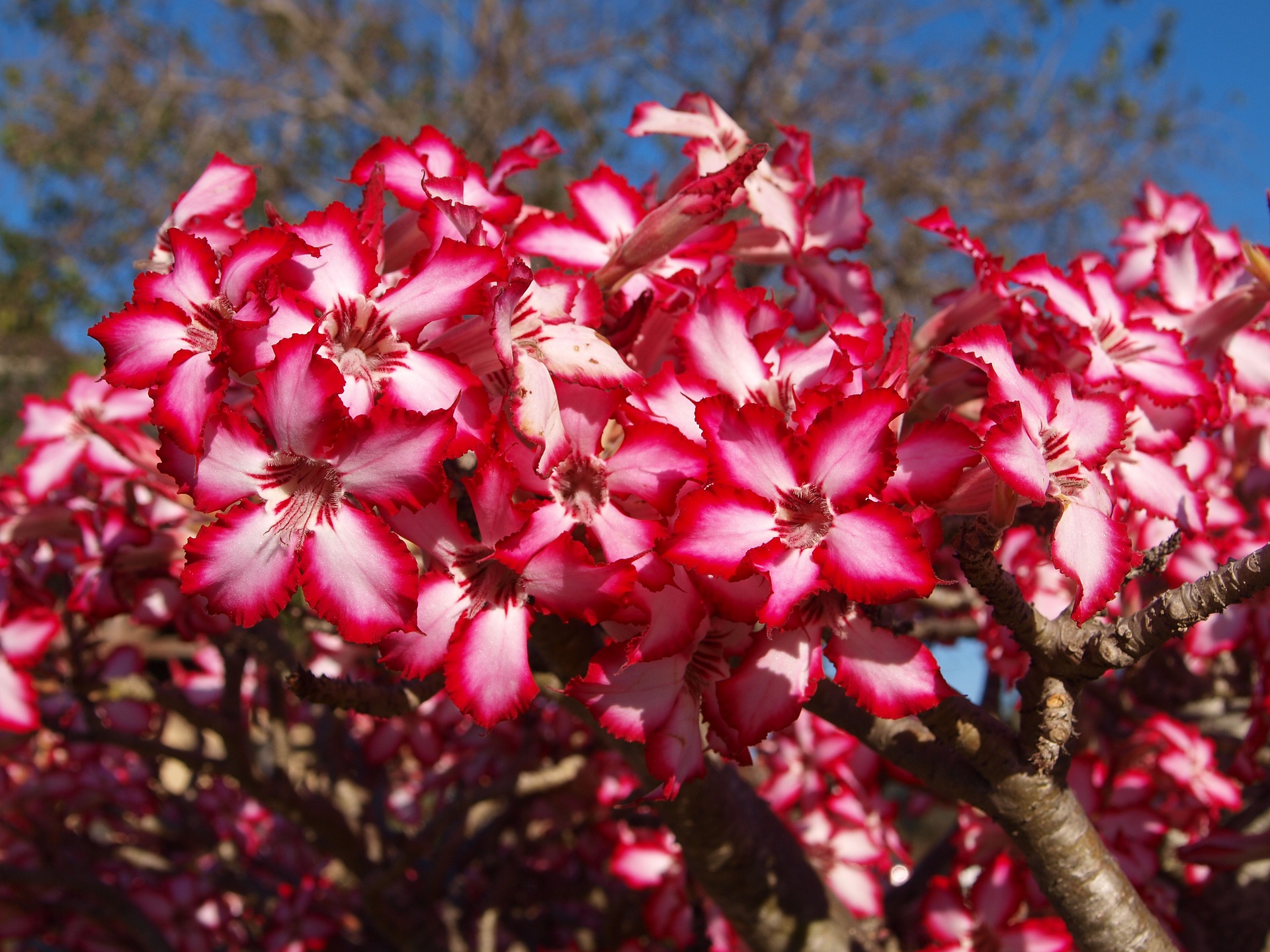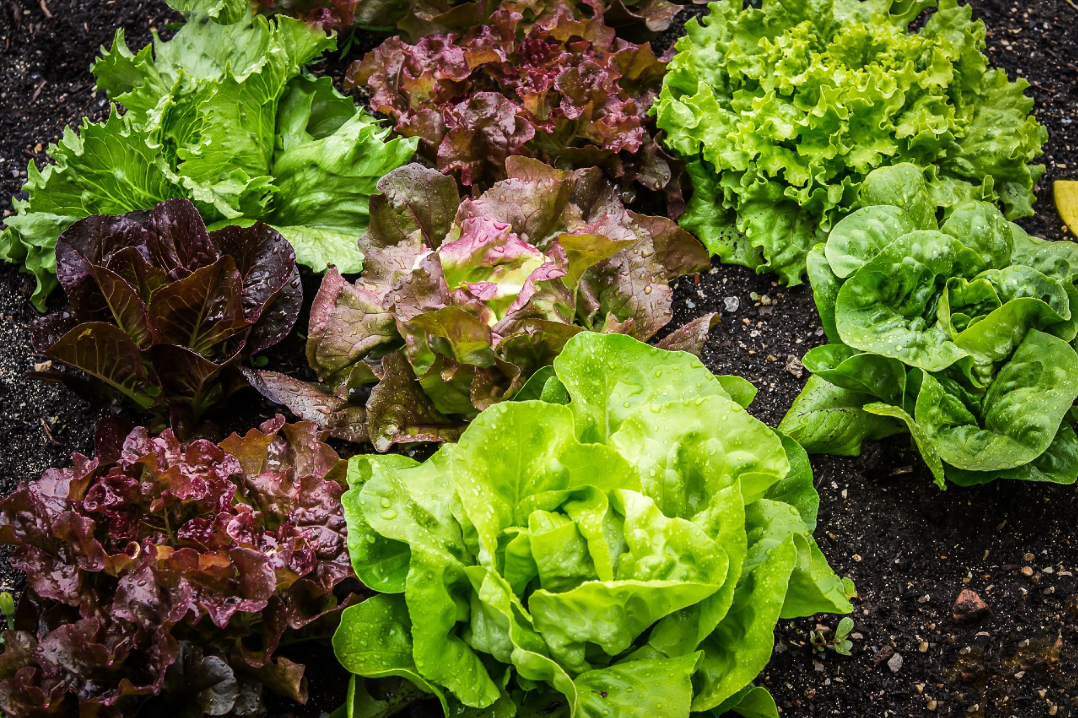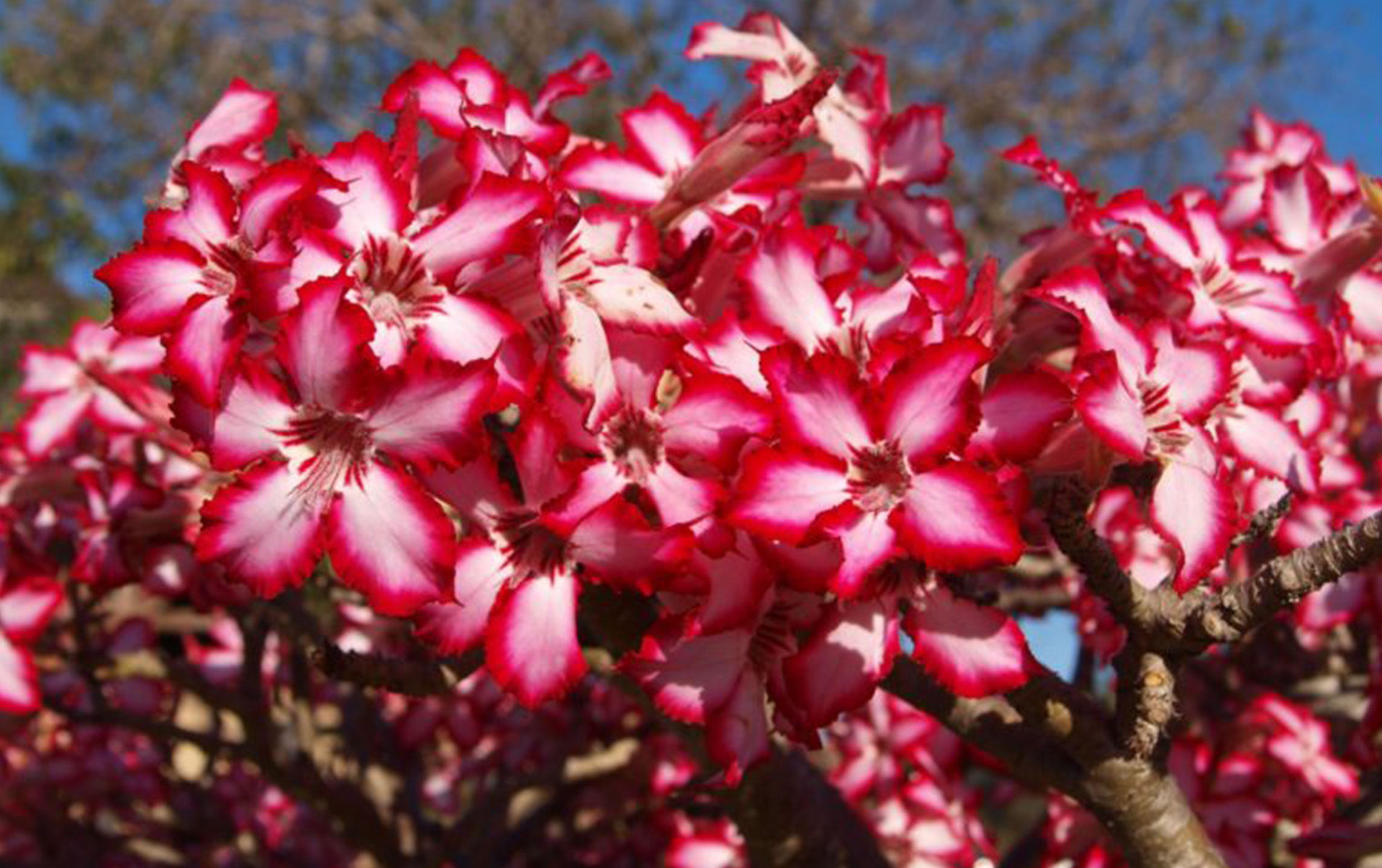Although winters are generally mild in the desert, here are some garden tips to keep your plants healthy as the weather cools.
Keep your plants warm.
Now is the time to begin planning for frost events. Purchase or stage your frost protection so that if and when an event occurs, you are prepared. Use a fabric such as N-Sulate (medium weight, permeable, UV-treated cloth), burlap or old sheets; never use plastic as it causes plants to burn where they come into contact with it. Frost cloth such as N-Sulate can be found at various garden centers. If used correctly, it adds several degrees of warmth underneath. Drape material so it touches the ground around the edge of the plant in order to trap warm air and any heat radiating from the soil.
N-Sulate frost cloth does have about a 30% shade factor, so although it can be left on for several days in a row, do not leave it on the plants the entire winter or for long periods of time.

Protect your Desert Rose from frost this season.
Move your Desert Rose (Adenium spp.) to a protected area such as a covered patio to protect from frost and winter rains. In case of a severe frost, bring the plant indoors for a short period of time. Check out our Desert Gardening Guide on Adenium for more information.

Cut back on watering.
Continue to cut back on watering. Water container plants to twice per month or even less for cacti and succulents. Succulents generally do not enjoy being cold and wet. By the end of the month, your irrigation system should be shut down for the winter. The ground is cold, stays moist longer and plants won’t be growing, so they need the rest. This will also harden off the plants for any frost that occurs. If the month produces no rain, consider an overall watering at the end of the month.
A good time to plant veggies.
You can continue to plant most of your desert plants with the exception of frost sensitive plants. Now is a good time to plant vegetables like beets, broccoli, Brussel sprouts, cabbage, chard, lettuce, spinach and green onions.

Prune thoughtfully.
Most trees are dormant by the end of this month. Deciduous trees, those that lose their leaves, can be pruned now as it is easy to see flaws that need correcting, such as crossed branches. Prune also for health and safety. Avoid lion-tailing, which is excessive interior thinning. This forces the growth of branches outward, straining and weakening them. Avoid pruning Palo Verde trees (Parkinsonia spp.) in the winter. More vigorous trees such as mesquites should receive a light pruning now. And always remember the golden rule of pruning, never remove more than 25% of the canopy in a season!

